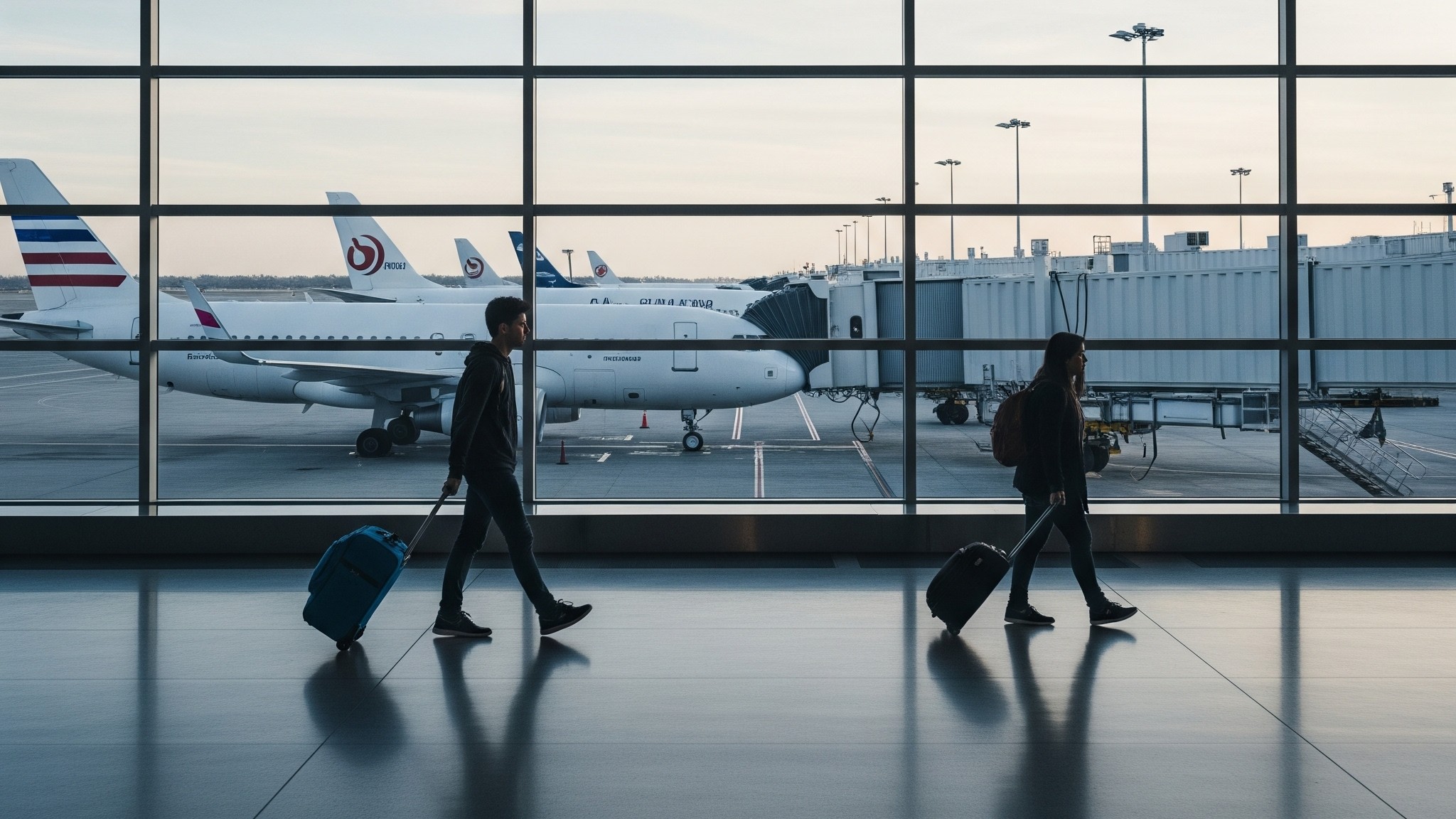As of July, 2025, the U.S. tourism landscape is undergoing significant shifts, as highlighted in the YouTube video “Tourism Is Crashing, Airports Empty as 10 Airlines Are Pulling Out of the U.S.” by Global Discovery Documentary, uploaded on July 4, 2025.
From a tourist’s viewpoint, this video raises concerns about accessibility, cost, and welcome, prompting a deeper look into the factors driving these changes. So, let’s analyse the insights from the video and corroborate them with recent reports to present a comprehensive overview.
Video Summary and Tourist Implications
The video depicts a U.S. tourism crisis, with airports like LAX and JFK appearing empty and 10 major airlines—such as Air France-KLM, Lufthansa, Emirates, Air Canada, WestJet, Porter, and Air Transat—either reducing routes or abandoning U.S. flights. To a tourist, this would mean fewer flight options, potentially higher costs, and a less vibrant travel experience. This attributes to high tariffs, stricter border policies, and a perceived unwelcoming atmosphere, particularly under the Trump administration’s policies.
For a potential visitor, a visit to the U.S. would be more challenging. The video’s imagery of desolate airports paints a grim picture as they are considered gateways to adventure, and empty terminals suggest a destination losing its appeal.
The reduction in airline routes could lead to longer layovers, less convenient schedules, and higher fares, especially given reports of a 40% year-over-year drop in leisure bookings to American cities in February 2025, as noted by Flight Centre Travel Group Canada.

Economic Factors Driving the Decline
Economic pressures are a significant deterrent. The video mentions high tariffs, with a minimum 10% on imports from all countries and rates nearing 30%, implemented in April 2025. These tariffs, as reported by Oxford Economics, are slowing U.S. GDP growth to 1.4% and raising inflation to 3.9%, reducing disposable income for travel. For tourists, this translates to pricier flights, hotels, and attractions, making destinations like Canada, Portugal, or Thailand more attractive, with a reported 200% surge in search trends for these alternatives.
The economic impact is evident in America’s tourism sector, which contributed $2.3 trillion to the its economy in 2019 and supported one in ten jobs. The video claims a potential $10 billion loss in international travel spending in 2025, affecting cities like Orlando, New York, and San Francisco. As a tourist, one would notice struggling businesses—hotels slashing rates, restaurants with fewer patrons, and attractions like Broadway shows seeing reduced crowds. While lower rates might offer deals, the overall experience could feel less vibrant.
Political and Social Barriers
Political uncertainty and inconsistent immigration policies are making the U.S. feel less welcoming. The video highlights reports of travellers being detained, shackled, or deported over minor visa issues, with phones searched without clear justification. This aligns with reports of visa processing delays, especially from Asia and South America, freezing inbound tourism and deterring business travellers and high-spenders.
Countries like Germany, France, New Zealand, Denmark, and Finland have also issued travel advisories, with Germany and the UK seeing visitor drops of 28% and 18% respectively in March 2025, reflecting growing wariness.
As a tourist, this creates a sense of unease. One would worry about bureaucratic hurdles at U.S. borders, potentially facing hostile treatment, which could push a traveller toward destinations with more open atmosphere. The video also notes a June 2025 internet outage disrupting booking systems and airport operations, adding to travel chaos and making a potential visitor hesitant to book a U.S. trip.
Airline Route Changes: Fact vs. Fiction
The video’s claim of 10 airlines pulling out is controversial. While some sources confirm specific cuts, the overall picture is nuanced. For instance, Flair Airlines cut three U.S. routes in March 2025 due to reduced demand, and American Airlines reduced international flights into 2025 due to Boeing delivery delays, as reported by CNBC.
Air Canada also proactively reduced capacity to popular U.S. leisure destinations in March, anticipating lower demand. These cuts align with the video’s narrative, potentially affecting flight availability and increasing costs for tourists.
However, other reports suggest a different trend. OAG indicates total airline capacity from North America for summer 2025 is up 2%, with Canada seeing a 4% increase and the U.S. a 1.7% increase, driven by new routes from Delta (e.g., Boston to Barcelona) and others. MightyTravels.com notes major U.S. airlines cutting routes in Q1 2025, leading to rising airfares, but also high passenger loads on remaining flights, suggesting demand isn’t universally down. Suggesting that the video’s claim might be exaggerated, with some airlines expanding while others scale back due to tariffs, demand, or supply chain issues.
Regional Variations and Tourist Impact
The decline is stark for certain regions. The video emphasizes a 21% drop in summer ticket sales from Canada, with a 20.2% decline in Canadian visitation, devastating border towns, ski resorts, and cities like Seattle. This is supported by Travel and Tour World, noting a 9% overall drop in international arrivals, costing $12.5 billion, with significant losses from Europe and Canada.
Yet, not all markets are down. The video and supporting sources indicate strong demand from Japan and Ireland, with international bookings to the U.S. down only 2% globally for the summer.
A New York Times analysis suggests a 10% drop in March 2025 was partly due to a late Easter, with overall travel “largely holding up.” U.S. airlines like Delta, American, and United report robust international demand, particularly from non-European countries, suggesting the U.S. remains viable for some tourists depending on origin.
Conclusion and Recommendations
As a tourist, the video’s portrayal of a struggling U.S. tourism industry raises valid concerns about cost, accessibility, and welcome. Higher tariffs, stricter border controls, and airline route reductions make the U.S. less appealing compared to other destinations.
However, the situation isn’t uniformly bleak, with some markets holding up and potential for last-minute deals. A visitor should weigh his options considering budget, visa ease, and alternative destinations like Canada or Thailand, which are reportedly more welcoming and cost-effective.
For detailed insights, check
- Travel and Tour World https://www.travelandtourworld.com/news/article/canada-mexico-uk-france-japan-germany-may-stay-away-from-us-travel-losing-twelve-and-a-half-billion-usd-nine-percent-decline-in-international-tourists-arrival-making-a-sh arp-decline-in-america/
- AirlineGeeks.com – https://airlinegeeks.com/2025/03/06/flair-cuts-three-u-s-routes/
- CNBC – https://www.cnbc.com/amp/2024/04/26/american-airlines-cuts-some-international-flights-citing-boeing-delays.html


Leave a Reply
You must be logged in to post a comment.